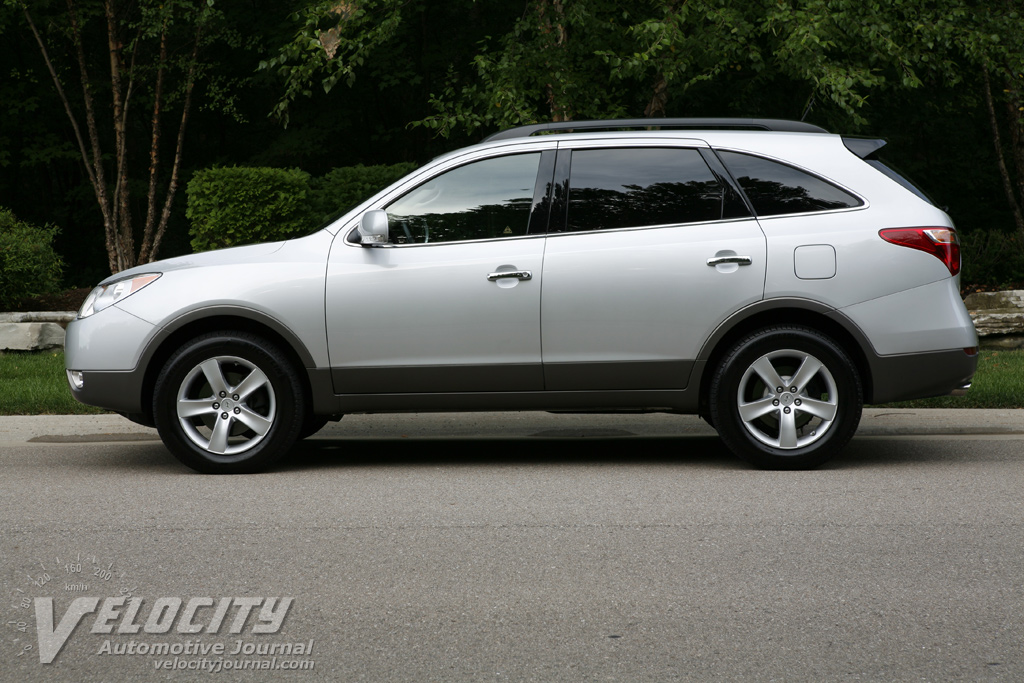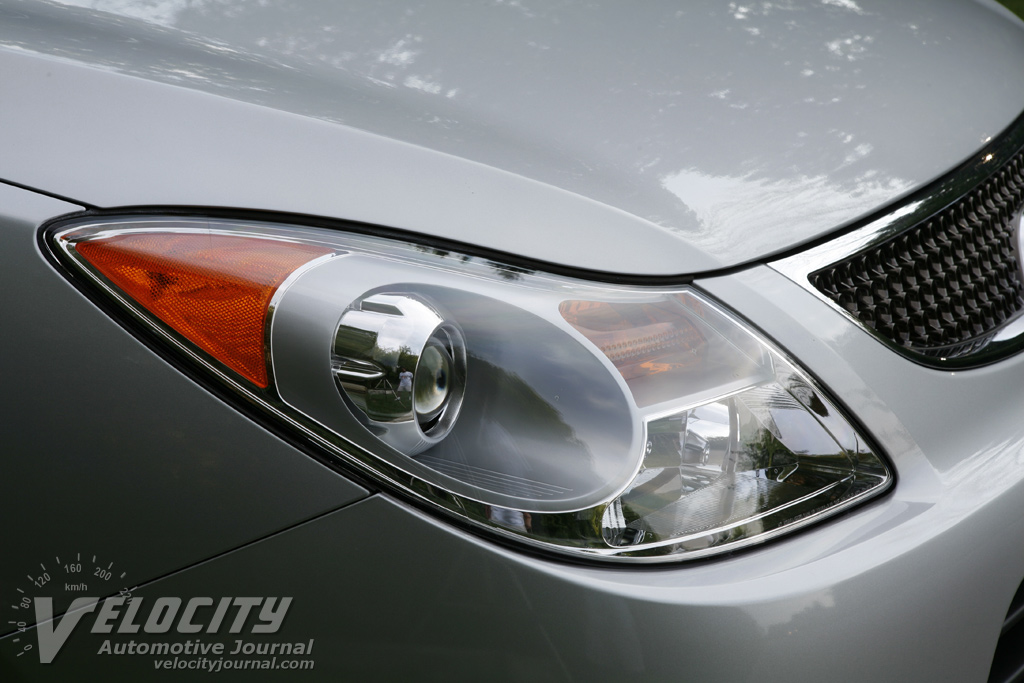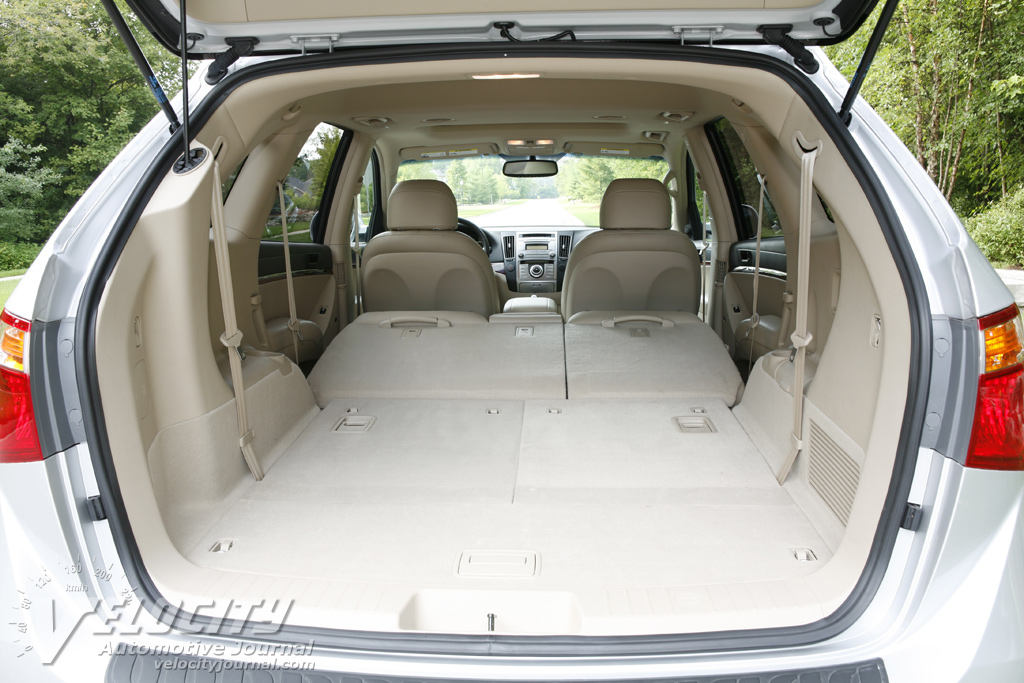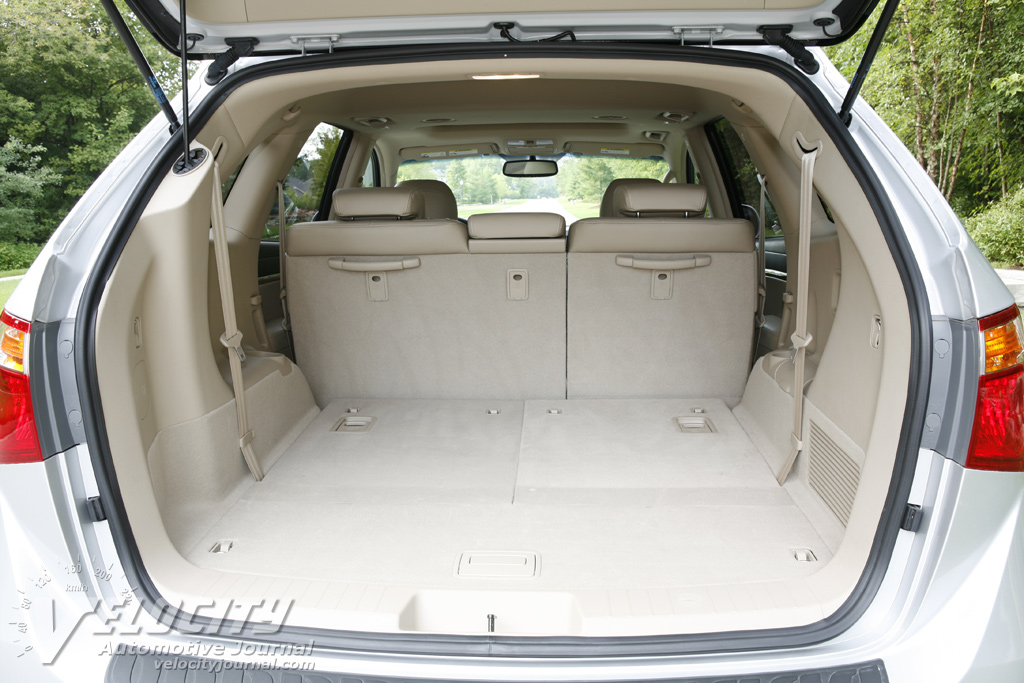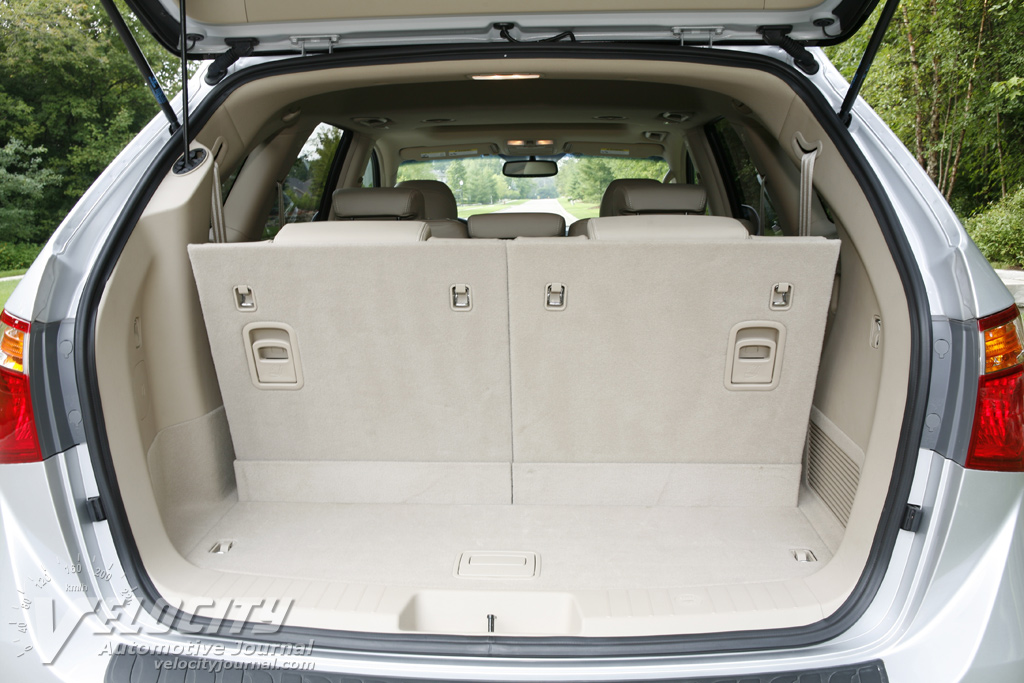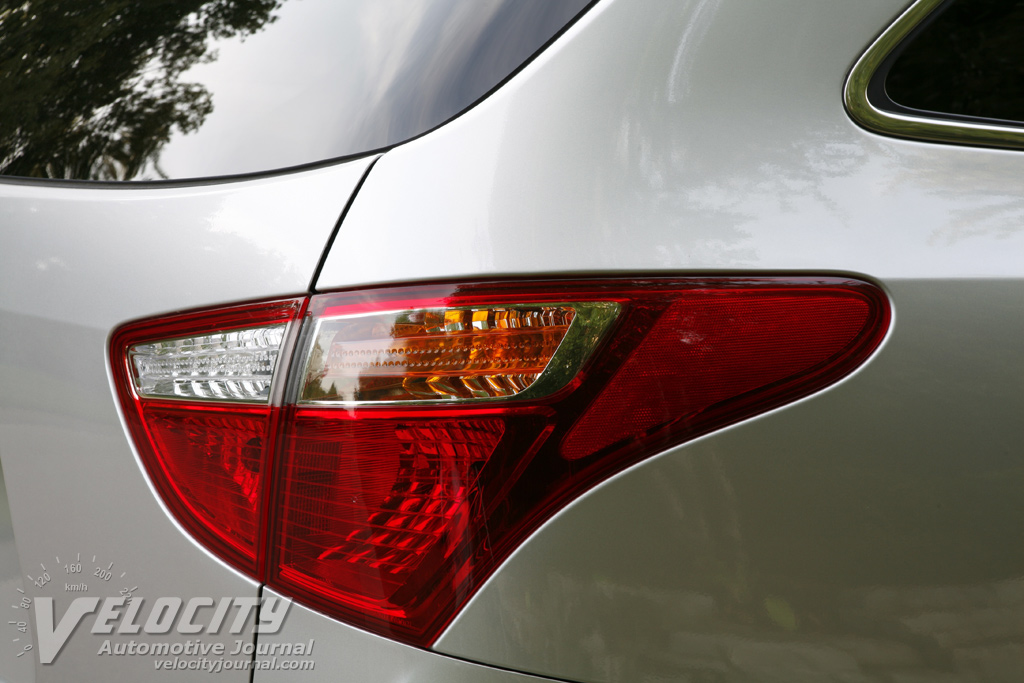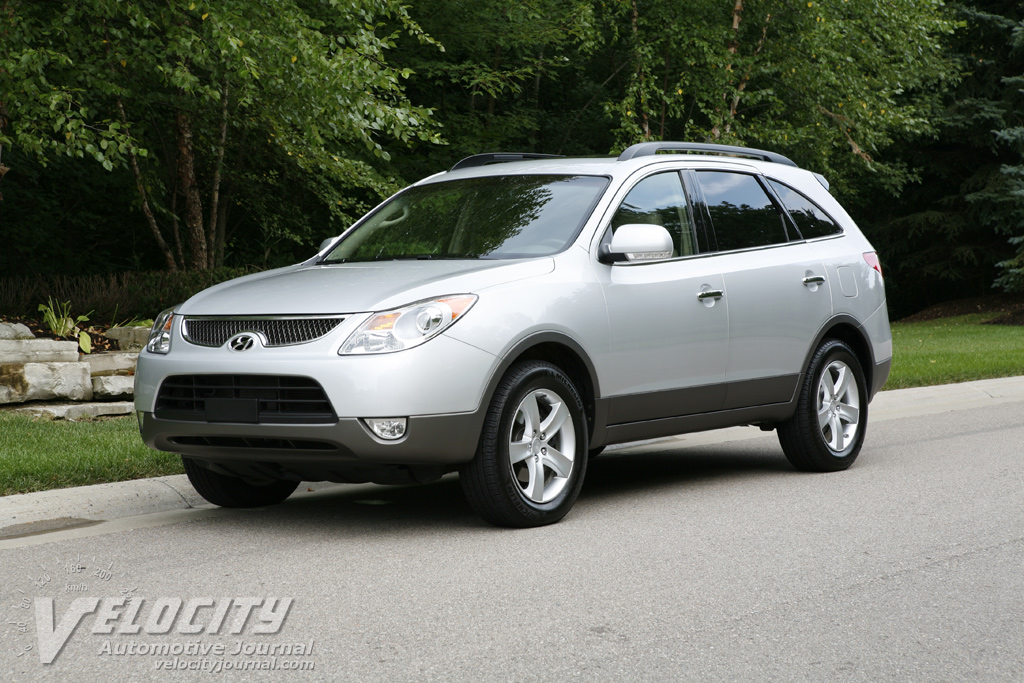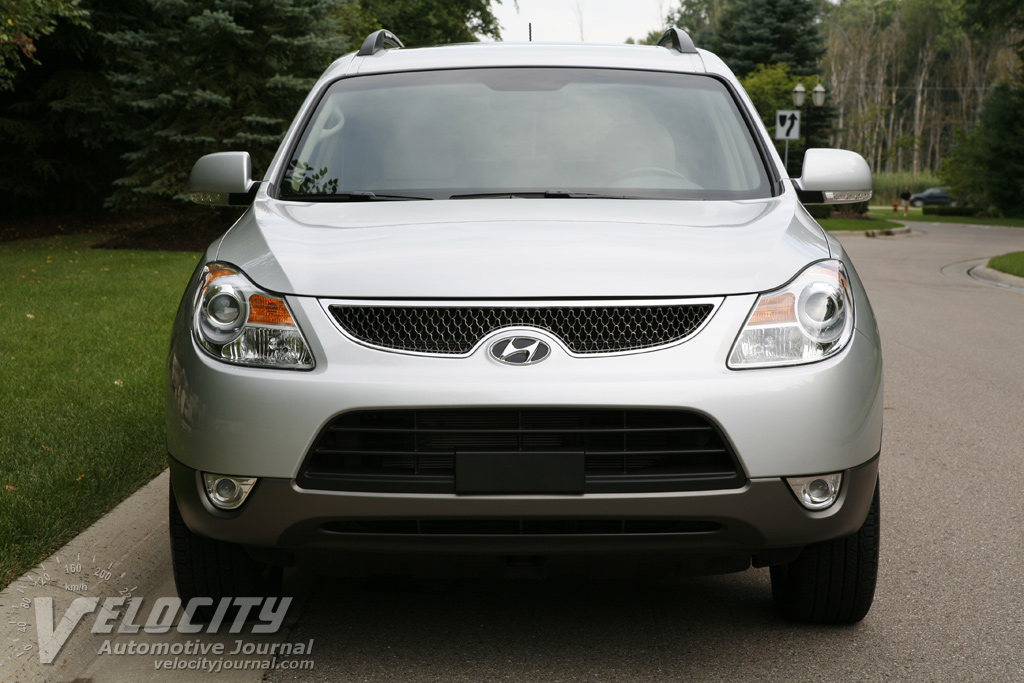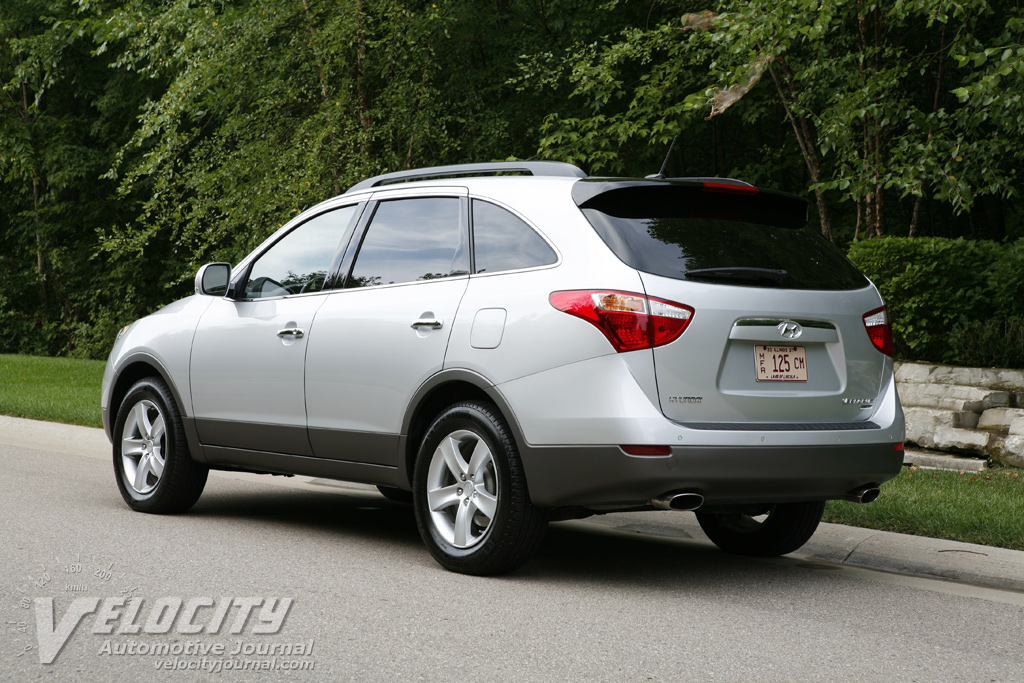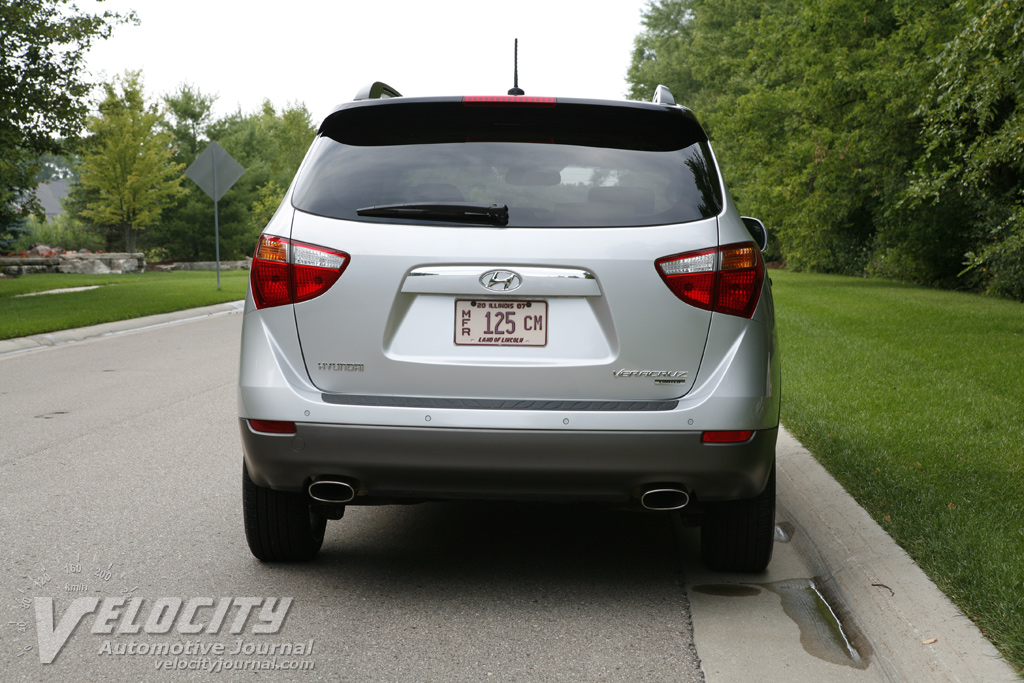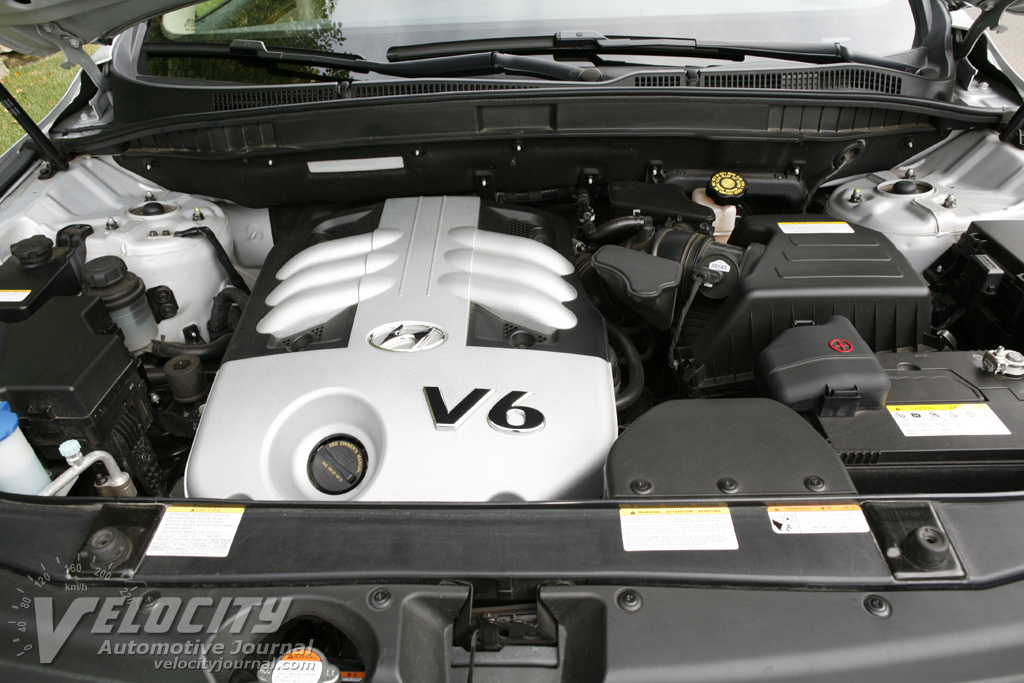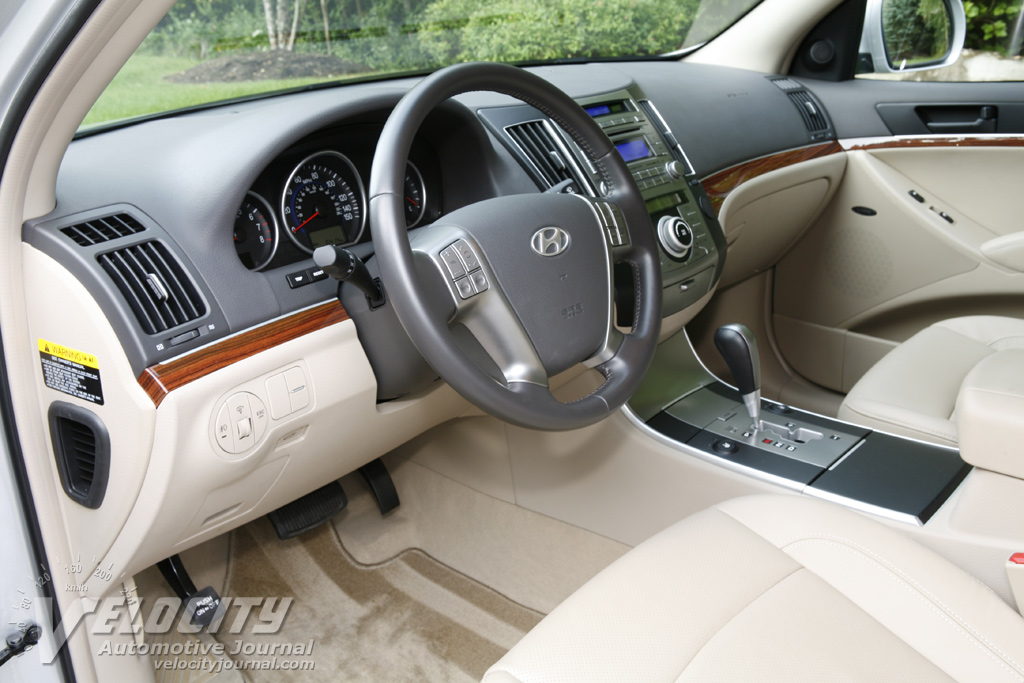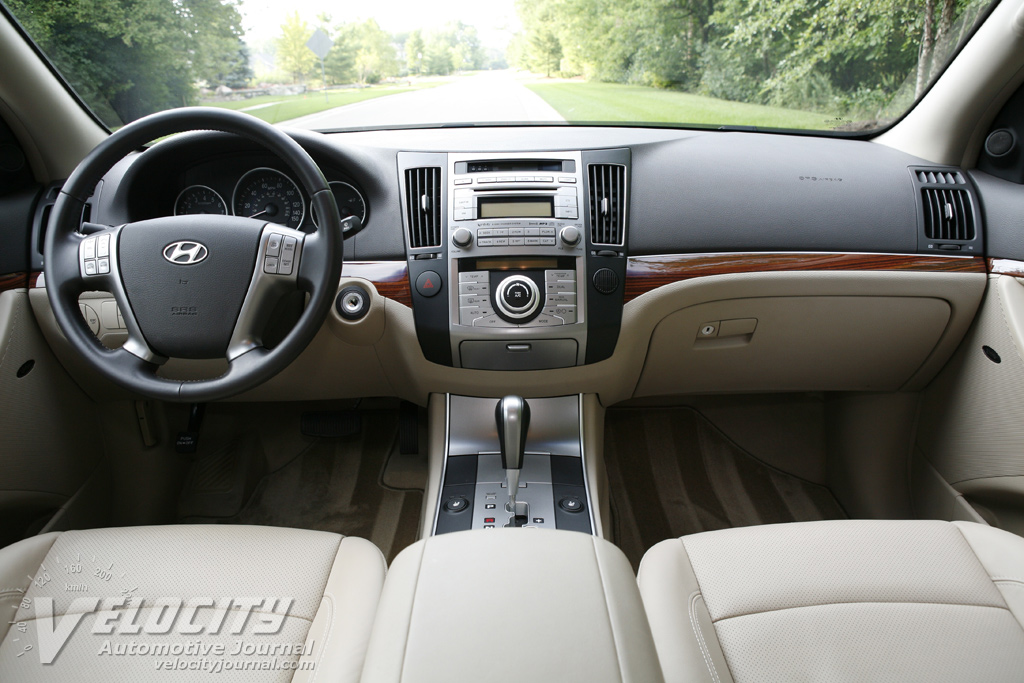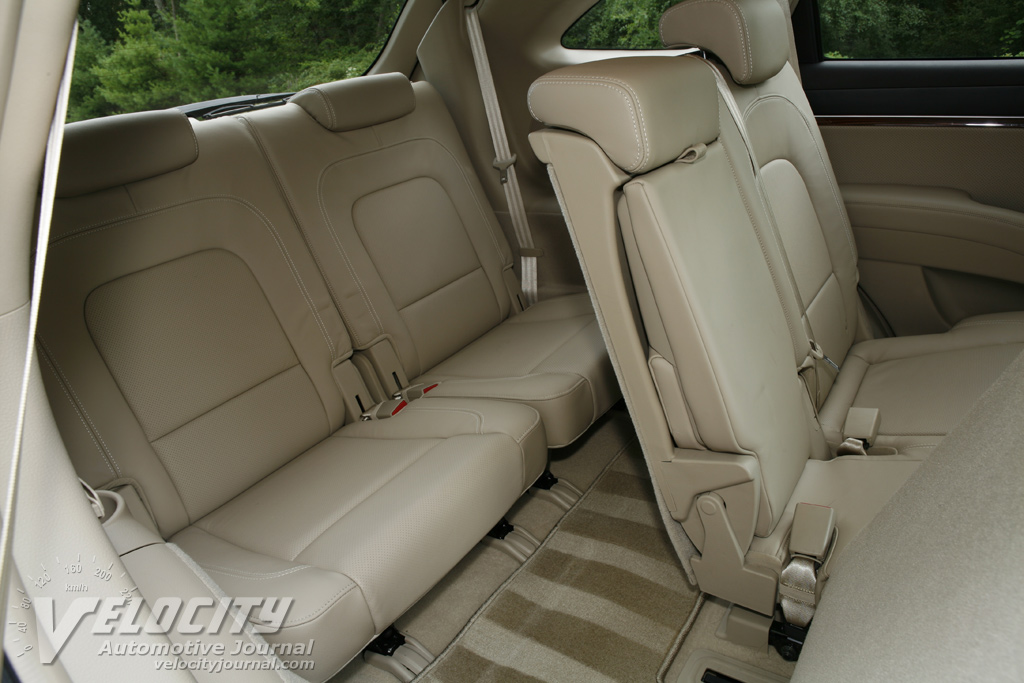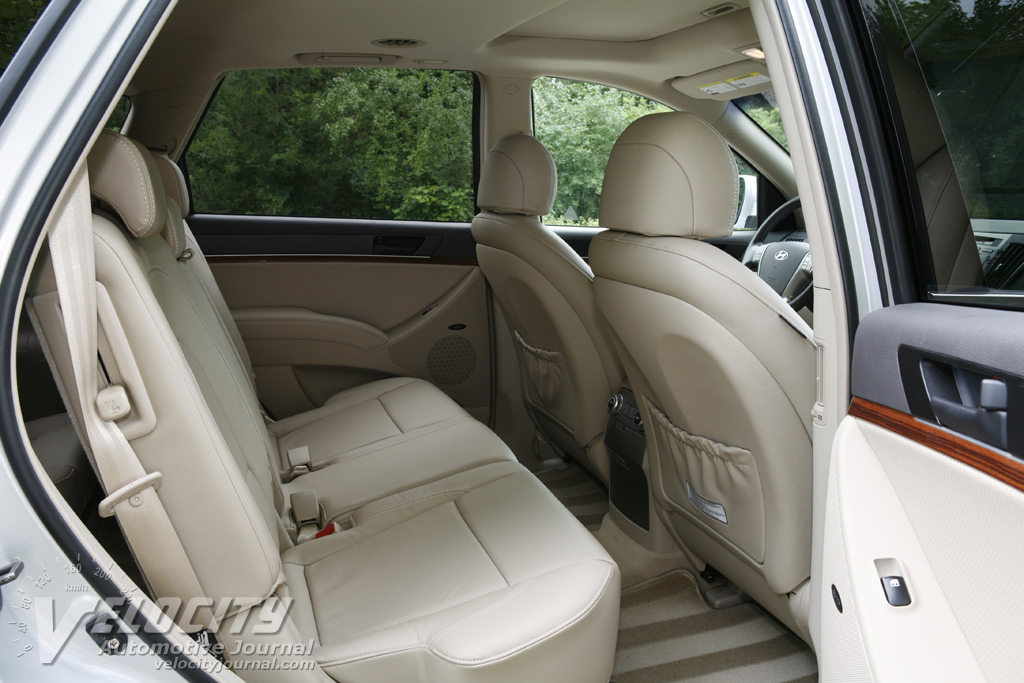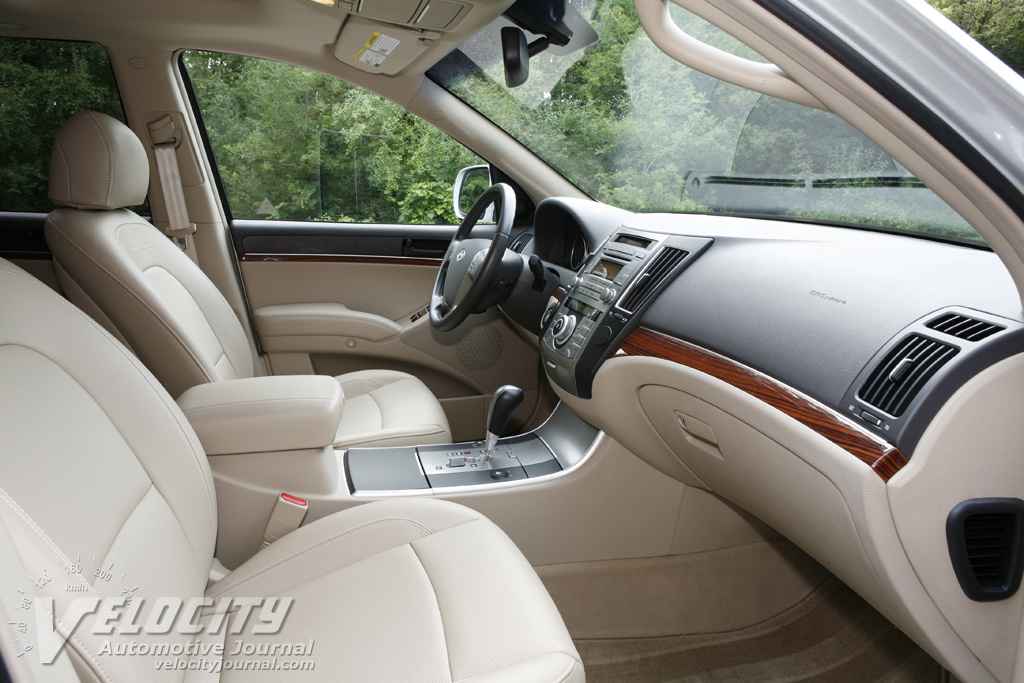2007 Hyundai Veracruz Limited
08/15/2007
Shahed Hussain
The Veracruz is the first luxury SUV from Hyundai, and is the flagship of the lineup, which includes the smaller Santa Fe and Tucson. Although Hyundai compares the Veracruz to the Lexus RX350, its real competition is the Honda Pilot, Nissan Murano, Ford Edge and the GM SUVs: Enclave, Outlook, and Acadia. Hyundai equips the Veracruz with 3-row seating, a V-6 mated to a 6-speed automatic, and a choice of FWD or AWD powertrains. The Edge and Murano lack three-row seats, while the Pilot and the GM trio match the Veracruz in passenger accommodations. This is a decidedly competitive arena for Hyundai, but the Veracruz has no obvious shortcoming versus the other comparable SUVs.
Hyundai offers the Veracruz in three trim levels, ranging from the base GLS FWD (MSRP $26,305), the midlevel SE FWD (MSRP $28,005), and the loaded Limited FWD (MSRP $32,305). Destination charges add $690 on top of the base prices. AWD is available on all models for $1,700 extra. We tested a lightly-optioned Veracruz Limited FWD (a set of $125 floor mats were the only add-on). Aside from the previously noted AWD option, the Veracruz Limited also offers the $2,950 Ultimate Package (adjustable pedals, memory seats, power tilt/telescoping steering wheel, rear DVD entertainment system, plus a few other minor features), or an upgraded $3,200 Ultimate Package with a special Black/Saddle interior. If we were considering the Veracruz, we would probably choose the SE FWD model with the $3,350 Premium & Leather Package, which includes a sunroof, heated leather seats, and the Infinity® audio system for $31,355, or $950 less than the base Veracruz Limited FWD.
Hyundai knew that the Veracruz would need an attractive, high quality interior to be a credible luxury SUV. As a result, the Veracruz has soft touch trim everywhere, complementary interior colors, plush upholstery, and superb build quality comparable to the best Japanese competitors. Embossed seats and metal doorsill scuff plates with "Veracruz" logos announce that this is Hyundai's flagship SUV. Strips of glossy "wood" trim span the dashboard and upper door panels; closer examination reveals that the "wood" is actually a plastic appliqué. Competitors such as the Buick Enclave also used simulated wood for interior trim, which is typical for SUVs in the $30K price range.
An overhead console has a sunglass holder compartment, a convex "conversation" mirror, and a blue LED for diffuse interior mood lighting. Blue-tinted auto-dimming exterior rearview mirrors cut headlight glare at night. All the doors have storage pockets, but no room for water bottles. Hyundai does include dual cupholders on the center console for the front and second row passengers. Rearmost passengers get their own cupholders integrated in the outboard armrests. The glove box offers minimal storage room as the owner's manuals take up much of the available space. A small compartment on the center console hides a coin tray and a 12V power outlet. Additional 12V outlets are located at the rear of the center console, and in the cargo area. Under the center console armrest are two storage bins. The smaller bin is sized for a mobile phone, while the larger compartment below is fan-cooled to keep drinks or sandwiches chilled. Below the HVAC controls is a small compartment with an auxiliary audio input and a mini-plug adapter cable.
Although the driver and front passenger get soft perforated-leather seats, their flat side bolsters provide minimal lateral support; we felt like we were riding on top of the seat. Heated front seats are standard on the Limited trim level, and optional on the Veracruz SE. The driver's seat has 6-way power adjustments for fore/aft position, seatback rake, height, plus power lumbar support; while the front passenger seat gets 4-way power controls for fore/aft position and seatback rake. Even with the standard sunroof, front headroom is adequate for 6-foot tall occupants. The second-row seats slide back on rails for more legroom, and even recline for extra comfort. The front seats have scooped out seatbacks to improve legroom for second-row passengers.
Even though Hyundai includes 3rd row seats, these are best left for short trips and children. Getting in requires the 2nd row seat to be flipped forward, which opens a narrow gap for entry to the 3rd row. Legroom in the shallow footwell is inadequate unless the 2nd row passengers slide their seats forward. More importantly, headroom for 5'-10" or taller passengers is restricted by the sloping rear hatch. The small triangular rear windows and downward curving roofline make the 3rd row seats feel slightly claustrophobic. Fortunately, these seats fold flat to liberate extra cargo space. Anyone who has wrestled with removing bulky seats from truck-based SUVs will appreciate the convenience of the Hyundai's folding seats. We think that most owners will rarely use the 3rd row seats anyway, because luggage space with the seats upright is minimal: only a few small grocery bags will fit behind the rear seats. The spare tire is mounted underneath the vehicle, preserving precious cargo room. Veracruz Limited models get a handy power opening and closing liftgate; although parents should take care that kids in the 3rd row seats keep their hands away from the liftgate when it is opening or closing.
The Veracruz has a typical all-independent suspension expected from car-based SUVs. The front suspension consists of MacPherson struts, while the rear is a multilink setup. Gas-charged dampers and stabilizer bars are fitted on both ends. Disc brakes equip all four corners: vented 12.6" diameter front rotors, 12.8" diameter solid rear rotors. ABS, EBD (Electronic Brake force Distribution), Brake Assist, traction control, and stability control (ESC) are standard on all Veracruz models. Veracruz SE and Limited models get P245/60R18 Michelin tires on 18" x 7" alloy wheels. Ground clearance is a respectable 8.1 inches. The available AWD system uses a lockable electromagnetic clutch to automatically send power to the wheels with the most traction.
Despite the all-disc setup, the brake pedal feels spongy and numb, with minimal feel. Although not much happens in the first inch of pedal travel, press harder and the brakes start to bite and rapidly slow down the Veracruz. Even though our test vehicle was a FWD model, torque steer was almost nonexistent; we only noticed a slight tug at the wheel at full throttle, and only near full steering lock. In everyday driving, the Veracruz gives no obvious indication of its FWD powertrain. We would only suggest the AWD option is worthwhile if you must contend with frequently snowy driving conditions.
When it comes to the driving experience, most premium car-based SUVs fall into two categories: sporty or luxurious. A few examples such as the Acura MDX manage to bridge the divide, but most veer towards the luxury end of the spectrum. Hyundai developed the Veracruz for world-class quietness and isolation; the result is an admirably refined SUV that is best at devouring miles at a moderate pace. Attack a winding road, and the Veracruz responds with prodigious body roll, lifeless steering, and uncoordinated reflexes. Slow the pace down, and the Veracruz rewards with a serene driving experience ideal for interstate cruising or a trip around town.
The standard 6-speed transmission shifts seamlessly between gears. To shift manually, slide the lever through the slotted shift gate, and push forward for upshifts or backward for downshifts. In manual mode, the selected gear is shown on the instrument panel display. However, the transmission will not hold the selected gear in the manual mode, and will automatically upshift about 200 RPM below redline. We doubt that most Veracruz customers will shift for themselves, or care that the transmission software will upshift automatically without driver input.
We were quite impressed with the Hyundai Veracruz; a refined, luxurious SUV at a very attractive price. With its generous standard equipment, the Veracruz is a superb value in the car-based SUV segment. Lexus RX350 customers probably won't consider the Hyundai because it lacks a premium brand image; more frugal buyers looking at the larger Saturn Outlook, Buick Enclave, or GMC Acadia may find the Veracruz as a viable alternative. The Ford Edge and Nissan Murano are comparably priced, but don't offer nearly as much room or 3rd row seating like the Hyundai. It is a measure of Hyundai's progress that the Veracruz can be credibly included in the pool of car-based SUVs entries from domestic and Japanese manufacturers. The American buying public has certainly noticed, as Hyundai's market share has been steadily growing over the past several years. The Veracruz is proof that Hyundai is serious about competing in the midsize SUV segment.

